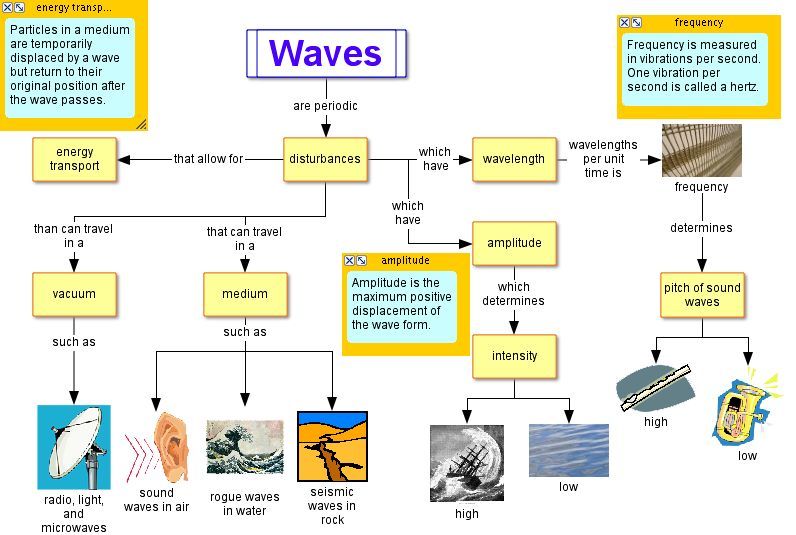Waves

What are waves?
~Waves are vibrations that transfer energy from place to place with / without medium (solid, liquid or gas) being transferred.
~ Waves are a disturbance that travels through a medium (sometimes with not need a medium for it to travels), transporting energy from one location (its source) to another location without transporting matter. Each individual particle of the medium is temporarily displaced and then returns to its original equilibrium positioned.
What is a Medium?
A wave medium is the* substance that carries a wave (or disturbance) from one location to another.* It merely carries or transports the wave from its source to other locations.
- Longitudinal & Transverse Waves
- waves must travel through a medium.* Such as , sound waves and seismic waves are like this. They must travel through a medium, and it is the medium that vibrates as the waves travel through.
(a)Transverse waves
In transverse waves, the oscillations (vibrations) are at right angles to the direction of travel and energy transfer
Light and other types of electromagnetic radiation are transverse waves. All types of electromagnetic waves travel at the same speed through a vacuum, such as through space.
(b) Longitudinal waves
In longitudinal waves, the oscillations are along the same direction as the direction of travel and energy transfer.
Sound waves and waves in a stretched spring are longitudinal waves. P waves (relatively fast moving longitudinal seismic waves that travel through liquids and solids) are also longitudinal waves.
- * Electromagnetic Waves *
Waves do not need to travel through a medium. Such as , Visible light, infrared rays, microwaves and other types of electromagnetic radiation are like this. They can travel through empty space. Electrical and magnetic fields vibrate as the waves travel.
Easy Math Editor
This discussion board is a place to discuss our Daily Challenges and the math and science related to those challenges. Explanations are more than just a solution — they should explain the steps and thinking strategies that you used to obtain the solution. Comments should further the discussion of math and science.
When posting on Brilliant:
*italics*or_italics_**bold**or__bold__paragraph 1
paragraph 2
[example link](https://brilliant.org)> This is a quote# I indented these lines # 4 spaces, and now they show # up as a code block. print "hello world"\(...\)or\[...\]to ensure proper formatting.2 \times 32^{34}a_{i-1}\frac{2}{3}\sqrt{2}\sum_{i=1}^3\sin \theta\boxed{123}Comments
Nice ......